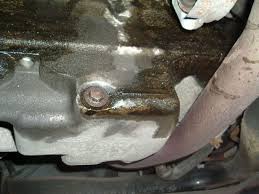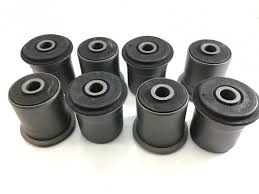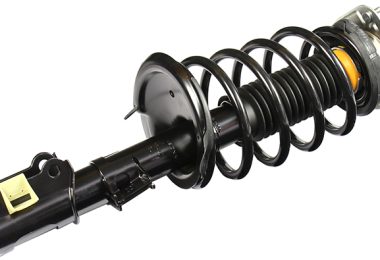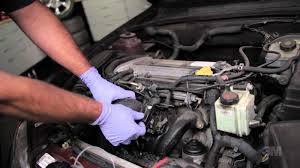Causes of blown transmission are matters of serious concern in the vehicle. Transmission is one of the most expensive components to repair on a vehicle. It can cost hundreds of dollars, and if you don’t know what caused your transmission failure, then you won’t know how to prevent it in the future. In this guide, I’ll cover all the reasons why transmissions fail so that you can avoid them yourself!
Broken Timing Chain
A broken timing chain is not hard to identify if you know what to look for. If you have a check engine light on, or the car isn’t shifting correctly and making noise in the process, one of your belts may be loose. Look for any signs of fraying or discoloration at the pulley area where the belt connects to your engine. If this happens, there is a high probability that your timing chain has broken and needs immediate repair before it causes further damage to other parts of your engine.
The best way to prevent a broken timing chain is regular maintenance checks with an auto mechanic who can identify potential issues before they become big problems down the road while also providing recommendations on general care in order not just save money but also make sure that your vehicle lasts as long as possible without needing repairs such as this one!
Broken Input Shaft
The input shaft is the part of your transmission that connects the transmission to your engine. It may break by overloading or excessive wear and tear. The input shaft can also be broken by excessive heat, which can occur if you drive in hot weather or tow heavy loads.
Incorrect Diagnosis of Problem
The most common cause of transmission failure is incorrect diagnosis of the problem. If you diagnose your vehicle’s transmission problems incorrectly, it could lead to further damage and could even cost you extra money in the long run. For example, if you believe that your car’s transmission has failed because it is leaking fluid and needlessly replace your entire transmission assembly with a rebuilt one when all that was really needed was a new seal or gasket can lead to further damage down the road and potentially ruin an otherwise salvageable part.
To avoid misdiagnosis: Don’t assume that just because something looks broken or worn out that means there is something wrong with it. Take time to investigate each possible cause before making any kind of repairs; this will save time and money down the line!
Improper Cooling System Maintenance
Your cooling system is responsible for moving heat away from your engine. It’s easy to forget about the cooling system, because it doesn’t need service often. But when it does, it’s important to keep an eye on:
- The coolant level and temperature of your vehicle
- Rusted or damaged hoses that might be leaking coolant
- Leaking radiator caps or water pump seals that allow air into the system (this causes overheating)
- Clogged or worn-out thermostats (especially if you live in a cold climate)
If you notice any of these problems, have them repaired immediately before they cause bigger issues with your transmission!
Leaking or Broken Transmission Cooler Lines
Leaking or broken transmission cooler lines can cause the transmission to overheat. If these lines are leaking, you’ll find a pool of fluid under your vehicle that looks like oil. The fluid might be dark brown or reddish in color and smell like burnt toast—a result of overheating and burning off gasket material between two parts where they’re sealed together.
If you see this mess while you’re driving, pull over immediately so you don’t damage other parts of your engine as well. You’ll also want to check if anything else is leaking—like coolant from a blown head gasket—and fix it before driving again!
Low Fluid Level
The first step to preventing a transmission failure is checking the fluid level regularly. This should be done at least once a month, and after any long trip or when there is a leak in the system. Read Also : How Much Does Transmission Cost
To check your transmission fluid level:
- Park your vehicle on a level surface with the engine off.
- Shift into park or neutral and make sure the parking brake is on.
- With your foot on the brake pedal and engine running, look under your car to locate an inspection hole or dipstick on each side of the transmission pan (useful tip: both sides are usually marked “front”). You may have to remove some plastic covers first (check owner’s manual). Don’t get too close to any moving parts! The dipstick only goes in about 2 inches so you can check without getting burned by hot oil splashing out of holes near it by accident if there’s pressure still left inside this part after driving around for awhile before checking – just make sure it’s not too full before removing cap from filler plug just incase there might be any residue left inside after driving around but don’t let go until all has stopped flowing outwards towards other parts such as metal rods sticking out from underneath because these could cause injury if touched while still hot enough for oil sludge being pushed through them which might happen during normal usage conditions depending upon how much time elapsed between stopping vehicle completely then turning back again after checking over carefully with initial glance prior already having been done beforehand; otherwise please wait until temperature levels drop down enough not exceeding 100 degrees Fahrenheit (37 Celsius) before attempting further inspection procedure steps outlined below.”
Improper Fluid Type
- Different types of transmissions require different types of fluid. If you don’t use the right fluid, you can blow your transmission.
- Changing your transmission fluid can be expensive and requires a special tool to remove and install the drain plug, which may not be available at your local auto parts store.
- Diagnosing problems with transmissions is complex and difficult—you are unlikely to find a mechanic who knows how to fix them without special training. This means that diagnosing blown transmissions usually involves taking it into an expensive shop for diagnosis first, then for repair if necessary (which again could involve more visits). In addition to being expensive, this process can take a long time as well: weeks or months for diagnosis and repair work depending on where you live and what kind of car you drive!
Worn Out Bands, Gears and Clutches
When you’re driving, a band is a type of rubber or metal ring that connects your internal components to the transmission and engine. A gear is another part of the system that transfers power from one component to another, like from the engine to transmission, or from one set of gears to another. Clutches are made up of plates with teeth on them that connect moving parts together by grabbing onto each other.
Blown transmissions can be caused by worn out bands and clutches—as well as gears—causing them not to work properly when they need to be in operation at high speeds.
Torque Converter Failure
Torque converter failure is the most common cause of transmission failure. This can be caused by a number of things, including overfilling the transmission fluid, overheating or overloading the vehicle.
The transmission is one of the most expensive components to repair on a vehicle.
If you’re looking at the bill for a transmission repair, it can be alarming. The average cost of a transmission repair can range from $1,000 to $3,000 depending on the brand and model of your vehicle. The good news is that there are usually no other major repairs needed when replacing a blown-out transmission. You may need to replace some fluids or filters, but you won’t have to worry about replacing other components like brakes and struts—something to keep in mind if you’re looking at costs and wondering whether it’s worth fixing your car or not. Read Also : How to Change Transmission Fluid
Conclusion
If you’re driving a vehicle that has a blown transmission, it’s time to take action. The best thing to do is have your transmission replaced as soon as possible. You’ll want to make sure you find an expert who can diagnose the problem and fix it quickly because having an unreliable vehicle puts everyone in danger of being involved in an accident.
If you’re experiencing any of these symptoms, it’s important to visit a transmission repair shop immediately. The sooner you get the problem fixed, the less money you’ll spend on costly repairs down the road.







